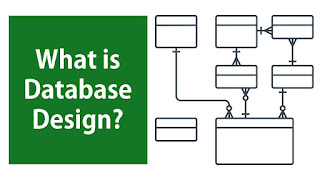Designing Database Schemes and Freelancing: A Guide to Success
Designing Database Schemes and Freelancing: A Guide to Success
Data is the backbone of countless applications and businesses. Efficiently organizing and managing this data is essential for seamless operations. This is where skilled database designers come into play, offering their expertise to create well-structured database schemes that ensure data integrity and accessibility. If you're interested in diving into the world of database design while working as a freelancer, this guide is here to help you get started.
Designing Database Schemes: A Crucial Role
A database scheme serves as the blueprint for how data is organized within a database management system (DBMS). It outlines the structure, relationships, constraints, and data types, ensuring efficient data retrieval and manipulation. A well-designed database scheme minimizes redundancy, enforces data integrity, and optimizes performance.
Key Steps in Designing a Database Scheme
Requirements Analysis: Understand the client's needs and the nature of the application. Identify the data entities, relationships, and business rules.
(Read More:- Previous Blog)
Conceptual Design: Create an initial high-level model that represents entities and their relationships. Tools like ER diagrams help visualize these concepts.
Logical Design: Translate the conceptual model into a more detailed structure using a DBMS-agnostic approach. Normalize the data to minimize duplication and maintain consistency.
Physical Design: Choose a specific DBMS and translate the logical design into its specific implementation. Define tables, fields, keys, and indexes for optimal performance.
Testing and Refinement: Thoroughly test the database scheme for data integrity, performance, and usability. Refine the design based on testing outcomes.
Freelancing in Database Design
Becoming a freelance database designer offers a unique blend of creativity, technical skills, and freedom. Here's how you can kickstart your freelancing journey:
Build a Strong Portfolio: Create a portfolio showcasing your database design projects. Highlight your ability to handle diverse projects and your problem-solving skills.
(Read More:- Get Upto 80% Off On Special Offer)
Online Presence: Establish an online presence through a professional website and active social media profiles. Share valuable insights about database design to showcase your expertise.
Networking: Connect with other freelancers, businesses, and platforms related to your niche. Networking can lead to referrals and collaborations.
Platform Utilization: Leverage freelancing platforms like Upwork, Freelancer, and Fiverr to find potential clients. Craft a compelling profile that emphasizes your skills and experience.
Client Relationships: Communication is key. Understand your client's requirements, set clear expectations, and keep them updated throughout the project.
(Read More:- Design Your own T-shirt)
Conclusion,
Designing database schemes and working as a freelance database designer can be a rewarding venture. Your skills in crafting efficient and robust database structures are in high demand, and the freedom of freelancing offers exciting possibilities. By following the steps outlined in this guide and utilizing effective freelancing strategies, you can embark on a successful career that combines your technical prowess with your entrepreneurial spirit.
Keywords for SEO:
Database scheme design
Freelance database designer
Database management systems
Database schema architecture
Database normalization
ER diagrams
Data integrity
Freelancing tips
Portfolio building
Online presence for freelancers




Comments
Post a Comment